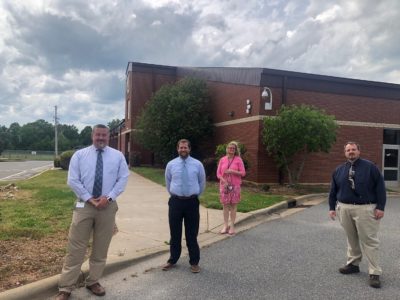On Thursday, May 7, the NC Rural Center and Rural Counts kicked off Rural Talk: A Virtual Advocacy Speaker Series with a focus on broadband challenges and opportunities in rural North Carolina.
Panelists included Jody Heustess of ATMC, a nonprofit cooperative providing communications services to coastal North Carolina; Jeff Sural, director of the North Carolina Broadband Infrastructure Office; and Robert Hosford, the North Carolina state director for USDA Rural Development.
Rural Counts is the advocacy branch of the NC Rural Center, and with this virtual series, they hope to bring together voices of leaders, experts, and the public to discuss key issues facing rural North Carolinians during the COVID-19 pandemic. Along with the aforementioned panelists, two state legislators, Rep. Zack Hawkins, D-Durham, and Sen. Harry Brown, R-Jones, joined for the Q&A session.
The full webinar can be found below, and if you are interested in joining future conversations, sign up here.
Access challenge: Maps and good data
The COVID-19 pandemic has brought the issue of broadband inequity to the forefront of social issues. Does your town not have broadband? Or does one side of the street in your community have access, but not the other? One problem may be that the Federal Communications Commission (FCC) already thinks that you have it. Heustess says, “Believe it or not, identifying the need of broadband is a difficult task.”
If some people have access to broadband in a certain community but others do not, the FCC may have incorrectly mapped the entire community as having broadband access. That map can determine federal or state funding.
What does Huestess say your community needs if you are in a broadband desert? A leader who can advocate, check the data, convene the right people, and ask the right questions.
“You’ve got to have a community champion that’s willing to step up, and you’ve got to take it upon yourself to say we need this in this location, and let that be known,” he said.
For Sural, one of the larger problems isn’t just connectivity, but the quality of the connection. The Broadband Infrastructure Office has been working with grant programs and other incentives in phases to get broadband to rural areas.
A couple of panelists echoed the same challenge. With the population density of rural North Carolina, it is difficult for good companies to invest in areas where they cannot sustain their business model. They need policy changes and funding attached to those changes with incentives to get broadband to more areas.
Adoption challenge: Digital inclusion and literacy
What is digital inclusion and how is it in a Catch-22 scenario with broadband access? In short, digital inclusion allows for full participation in our society, Sural said. Our democracy, economy, employment, telehealth needs, and civic and cultural participation all depend on our ability to work within the digital world.
Hosford describes digital inclusion as, “Activities necessary to ensure that all individuals and communities, including the most disadvantaged, have access to use of information communication technologies (ICT).”
USDA Rural Development divides digital inclusion into five areas: affordability, internet enabled devices, access to digital literacy training, quality technical support, and lastly, having online content designed to enable and encourage self sufficiency.
If more people in rural North Carolina are using the internet, then it reduces that initial hurdle for providers and they can get a quicker return on investment. However, if this same population has never encountered technology in this way, it is difficult to ensure they are digitally literate and will use the internet.
“I think most of the [legislative] members understand that there really are two North Carolina’s when it comes to broadband. And we have got to find a way to fix it. ” — Sen. Harry Brown
Brown spoke of the GREAT Grant Program, which helps fund broadband expansion across the state. Hawkins said this isn’t a partisan issue and that every county in the state should have the ability to grow and expand broadband access.
“We have to empower our co-ops, and we have to make it affordable,” Hawkins said. Last week, $9 million was allocated to rural broadband in the COVID-19 relief bill.
EdNC.org has reported on broadband concerns and remote learning since schools were closed March 14. In a presentation from Sural to a working group of the House Select Committee on COVID-19 on April 14, he estimated the state’s homework gap — or the number of households with a student living in them but without internet access — at 197,139.
Read about our coverage of the May 4 ncIMPACT virtual town hall on North Carolina’s digital divide here and stay tuned as we continue to cover Rural Talk every Thursday into June.
“It often is the last mile to the home service that’s the greatest issue in rural areas.” — Sarah Thompson, executive director of the Southwestern Commission in Sylva




